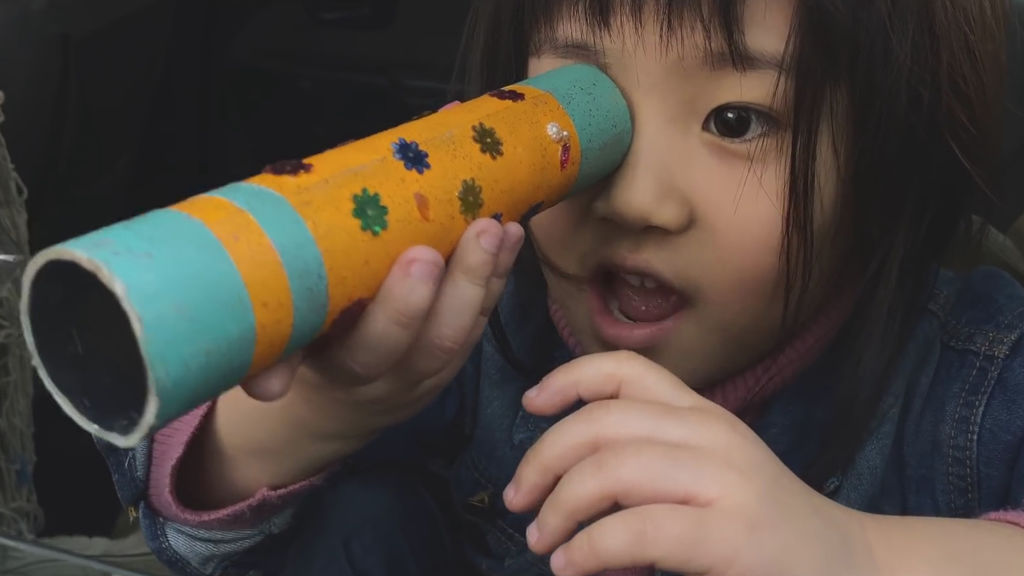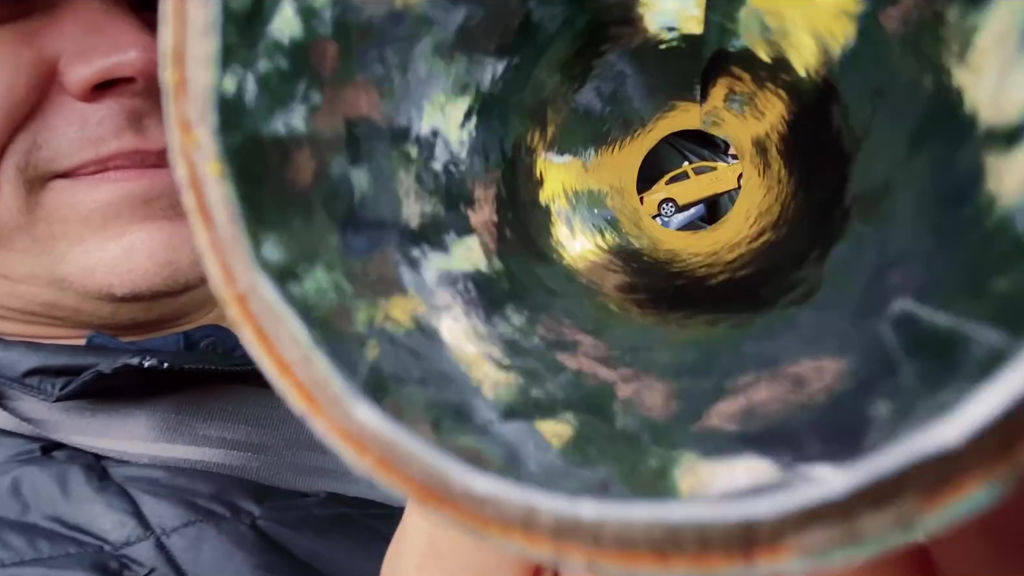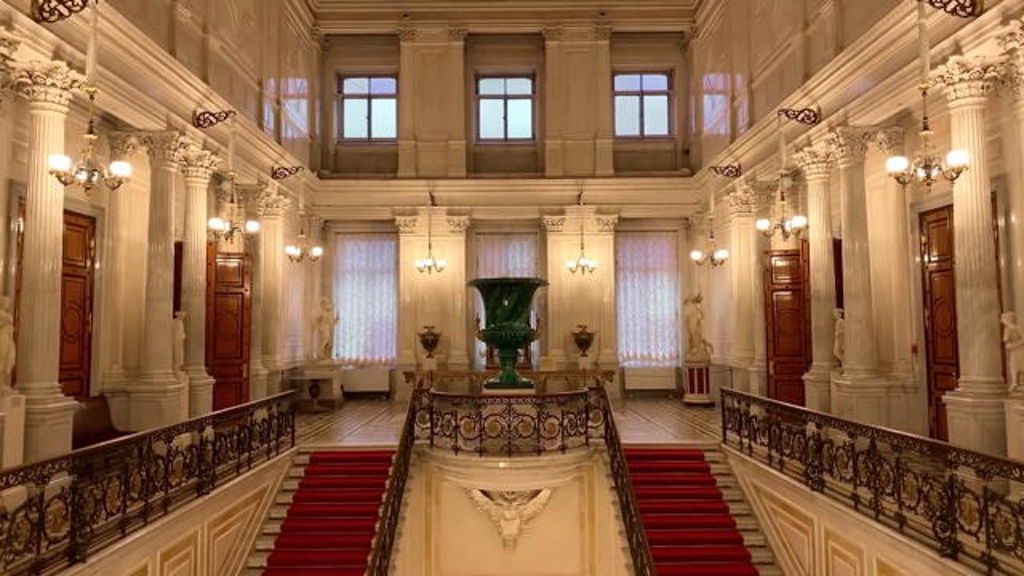The branded entertainment at Apple's core
With its remarkable shot on iPhone series of films, Apple has been delivering content with authenticity. Carol Cooper speaks to three directors about the pros and pros of smartphone cinema.
Some film buffs say modern cinema began with Orson Welles’s Citizen Kane.
Welles’s 1941 debut feature had a profound influence on 40s noir styling, dazzling critics with chiaroscuro lighting and such daring low camera angle shots as the view through a dropped snow globe; famously achieved by Welles digging a hole in the floor.
At last year’s Cannes film festival, veteran director Claude Lelouche’s film The Best Years of a Life received a Special Screening status. A second sequel to his 1966 hit, A Man and A Woman, it may have been of dubious merit critically but was of interest due to being part shot on iPhone. Enthusing about the process Lelouche stated: “Orson Welles would have loved shooting with an iPhone. It will change the history of cinema.”
Orson Welles would have loved shooting with an iPhone. It will change the history of cinema.
Many filmmakers have been discovering how the light and nimble smartphone offers a world of possibilities and saves the bother of cutting holes in floors. One of them is Oscar-nominated director/producer Theodore Melfi (Hidden Figures), who, together with DP Lawrence Sher (Joker) collaborated with TBWA\Media Arts Lab, Brother and RadicalMedia to create the drama Daughter, an Apple-commissioned short shot entirely on an iPhone 11 Pro.
Credits
powered by
- Agency TBWA\Media Arts Lab/Shanghai
- Production Company brother
- Director Theodore Melfi
-
-
Unlock full credits and more with a Source + shots membership.
Credits
powered by
- Agency TBWA\Media Arts Lab/Shanghai
- Production Company brother
- Director Theodore Melfi
- Production Co. RadicalMedia/Shanghai
- DP Lawrence Sher
- Talent Zhou Xun

Credits
powered by
- Agency TBWA\Media Arts Lab/Shanghai
- Production Company brother
- Director Theodore Melfi
- Production Co. RadicalMedia/Shanghai
- DP Lawrence Sher
- Talent Zhou Xun
Utilising a wide range of shots, it relates the story of a young mother forced to take her child around with her while she drives cabs for a living. It’s not only a beautiful tale well told, but is also a meditation on the nature of filmmaking. As she gazes at the world from the back of the cab, the little girl uses a cardboard tube as a telescope-cum-viewfinder, framing her vistas like a junior DP, illustrating how the filmmaker’s imagination shapes meaning and story.
Melfi explains how the cardboard tube came to be a recurring motif: “The folks at Media Arts Lab wanted to find something cinematic to highlight what the phone does best.”
We didn't want a complex cinematic device that a person with no resources couldn't pull off – everyone can get a water bottle.
Mindful that successful branded content needs to have authenticity, he insisted whatever they came up with had to serve the story, “or else it would be a gimmick, just us saying ‘hey look what we can do with an iPhone’. Melfi suggested the homemade ‘telescope’ and he and his DP, Sher, found that plastic water bottles created perfect telescope rigs. “We got them from the hotel, cut them open, stuck them to the iPhone lens and shot through them – it was magical – a beautiful kaleidoscope.”

Credits
powered by
These homemade rigs fulfilled part of Apple’s remit for the ‘shot on iPhone’ series – minimal, accessible tech. “We didn't want a complex cinematic device that a person with no resources couldn't pull off – everyone can get a water bottle,” says Melfi. The brief also stipulated there was to be no editing or manipulation. “Tor [Myhren, VP Marketing Communications] challenged us to just shoot as if we didn’t have support or a crew, we did just that, there is no big rig, we had the [Beastgrip Pro] – basically a small cage that allows you to hold the camera so that you can see the screen.”
They had a few other basic mini rigs and stabilisers, plus the Filmic Pro app, a $15 piece of software that makes it easy to adjust the camera’s aperture, colour temperature and focus.
Credits
powered by
- Agency Media Arts Lab
- Production Company GLP Creative
- Director Gary Land
-
-
Unlock full credits and more with a Source + shots membership.
Credits
powered by
- Agency Media Arts Lab
- Production Company GLP Creative
- Director Gary Land
- Creative Director Dave Estrada
- Executive Producer Cristiana Ladki Williams
- Producer Joe Maggiore
- DP Gary Land
- Executive Producer Greg Smith / (Executive Producer)
- DP Ryan Young
- DP Luke McCoubrey
- Producer Nathan Avila
- Executive Creative Director Scott McClelland

Credits
powered by
- Agency Media Arts Lab
- Production Company GLP Creative
- Director Gary Land
- Creative Director Dave Estrada
- Executive Producer Cristiana Ladki Williams
- Producer Joe Maggiore
- DP Gary Land
- Executive Producer Greg Smith / (Executive Producer)
- DP Ryan Young
- DP Luke McCoubrey
- Producer Nathan Avila
- Executive Creative Director Scott McClelland
If too much extra kit is required, does the tagline ‘shot on iPhone’ still strictly apply? Gary Land who directed Our Game, Apple’s portrait of India’s love affair with cricket, justifies their use of extra lenses.
Produced by GLP Creative for TBWA|Media Arts Lab, the short aimed to capture the diverse players, game styles and locations around the country, with footage collated from four filming teams in Mumbai, Chennai, Kolkata and Delhi. “We shot the film on iPhone XS and did use Movi Cinema Robot [stabilisers] and Moment cases with lens attachments,” says Land, “but often we just used the phone’s native lenses and a small tripod. Apple wanted to make sure that we only used tech that was available to anyone. People ask me all the time, ‘If you used accessories then was it really shot on iPhone?’. I answer with a question ‘When you shoot on a RED or ARRI cameras do you use accessories – lenses, matte box, filters?’ Of course, you do.”
When you have a phone you simply blend in with everyone else.
Apart from the logistical challenge of coordinating teams across India, battling intense phone-melting heat – “we had to keep extra phones in an ice-filled bag and trade them out every hour or so” – , and political unrest preventing a shoot in Kashmir, Land had to become accustomed to shooting with a smartphone. “I had to put aside my muscle memory from using my everyday equipment so I could perfect the iPhone’s controls.”
He soon came to admire its compactness and the immediacy it gives to filming. “It gives the shooter stealth. It allows you to get up close without making someone feel uncomfortable. When you have a phone you simply blend in with everyone else. Everyone has one, they just don’t know how to maximize its capabilities.”

The iPhone brand message is clear – anyone with a smartphone can be a filmmaker, so how do the professionals feel about the democratisation of the art of cinema? “I think it’s great for the craft,” says Melfi, “I think it pushes the pros to be better it gives the people starting out the ability to play and grow, I believe there is enough [room] in the world for everything. We need stories about different cultures and from filmmakers with different sensibilities. I came from a very poor family in Brooklyn, I didn't have the resources, I just picked up a little camcorder and started shooting stuff – that camcorder is now an iPhone.”
[The] camcorder is now an iPhone.
Land agrees, but says expertise does elevate content to another level. “Now everyone is a photographer or filmmaker, but there is a difference between professionals and the prosumer. Understanding settings, composition and the complexity of lighting are just part of what makes the experienced professional stand out. Plus, the ability to work under pressure and deliver quality work on time.”
One of the first feature films to be totally shot on iPhone is Sean Baker’s 2015 comedy drama Tangerine, the blistering tale of a trans sex worker on a jealous rampage through LA. The iPhone was more a case of necessity than choice – the director wanted to avoid the “samey” look of indie films shot on digital and the budget precluded celluloid. Baker is quoted as saying that he and his DP needed to create their own aesthetic when filming on iPhone.

So, in the five years since Tangerine launched has a smartphone film aesthetic emerged?
“I think a major task for us was to disprove Sean Baker's quote,” answers Melfi, “and I think we did. iPhone filming has evolved – back in 2015 the tech was such that Baker had to create the film’s aesthetic. With Daughter, we shot my aesthetic.
We could put the phone anywhere; and we did.
"Now you have more lenses, low-light capabilities, you have all this insane tech you didn't have before, so now you can shoot the film that’s in your mind’s eye. If you look at Daughter closely you’ll see there is no handicap. We could put the phone anywhere; and we did. We put it on drones, in glove boxes, on rear-view mirrors, on tyres. I didn't have the limitations I normally have with a big camera.”
Along with directors enjoying the phone’s modest proportions, the actors also enjoy the intimate shoot scenarios it affords.
In Daughter, the mother is played by Zhou Xun, one of China’s leading stars and a smartphone-shoot newbie. Melfi says she “fell in love” with the process: “For the shoots in her mum’s apartment, instead of 50 people swarming around, it was Larry [Sher] and I, a sound guy and a couple of others. In the cab, it was just me in the front seat and Larry in the back, so Zhou could be quiet and still and have a safe space to get into the heart of the character.”
The iPhone did a great job of just documenting reality – it just blends in so well with whatever is going on around it.
The discretion the iPhone affords also came in handy during rehearsals for another Apple collaboration with TBWA\Media Arts Lab, the remarkable Hermitage, a cinematic tour of one of the world’s greatest museums filmed entirely on iPhone 11 Pro in one continuous take, on one battery charge.
Credits
powered by
- Agency In-House
-
- Director Axinya Gog
-
-
Unlock full credits and more with a Source + shots membership.
Credits
powered by
- Agency In-House
- Director Axinya Gog

Credits
powered by
- Agency In-House
- Director Axinya Gog
Taking in the glories of the St. Petersburg institution’s 45 galleries, 588 masterpieces, plus staged visitor scenes, ballet and a set by Russian composer Kirill Richter, the film clocks in at five hours, 19 minutes and 28 seconds.
The shoot – which had to be done in a single six-hour window when the museum was closed – took months of planning, with rehearsals and walk throughs taking place during visitor hours. Director Axinya Gog recalls: “Because of the iPhone’s size we were able to navigate our way through crowds of tourists unnoticed. We didn’t have any intense close-ups with actors. But the iPhone did a great job of just documenting reality – it just blends in so well with whatever is going on around it. We wanted our camera to be a silent onlooker creating this connection between the museum and the viewer.”
The film required some impressive technical wizardry – Gog and crew creating elaborate rigs to seamlessly move the phone from handheld camera stabilisers to room-scanning cranes, and to cope with the museum’s challenging lighting conditions they had to design a custom app, called Catch, to enable remote command of camera settings, like ISO and white balance, via Apple Watch.
“I love editing,” says Gog, “and when I learned that we were not allowed to do any of that I was worried, but I respect Apple for honoring their promise. We didn't use any extra lenses or additional equipment besides the rig we built and the cranes and trolleys.”
Though Hermitage’s remit was to promote the phone’s enduring battery, the film still had to have some kind of story, which Gog says was her greatest challenge. The ballet and music were used to bring mood and emotional highlights, with characters in the film representing the visitors. “My main goal was to create this intimate dialogue between these timeless art pieces, their creators and the modern audience.”
This video is an honest experiment showing you the iPhone’s capabilities, but it's also a performance and a way for people to visit one of the great art venues –especially relevant in this challenging time.
The film is an absorbing watch, but have people been staying the course? Gog says: “I think you can tune in at any point and hopefully you will be drawn into this meditative state where you're able to slow down, relax and enjoy.”
She also feels it’s more of a work of art than an ad – the definition of successful branded content. “This video is an honest experiment showing you the iPhone’s capabilities, but it's also a performance and a way for people to visit one of the great art venues –especially relevant in this challenging time.”

In a way Hermitage is a piece of branded content about branded content – many of the works it celebrates – the Botticellis and Da Vincis; the Rembrandts and Raphaels – are the result of powerful brands – the Catholic Church, the courts and wealthy families like the Medicis; all promoting their good names and good taste through patronage. Their beneficence also brought high art to the masses.
Hermitage links the great flourishing of visual arts in the Renaissance with the democratic flourishing of visual art that we are seeing now. “What we did in the Hermitage could only be shot on iPhone,” says Gog, “this is what attracted me to the project: the connection between an imperial mindset, the vast beauty of human history – through the lens of this modern device."
I see the iPhone more as an additional tool. A tool that will continue to get better.
So, back to Lelouch and his prediction. Will it change the history of cinema? Land says it already has, “but not because it will replace what we currently use as professionals; but because anyone can make a film without breaking the bank. I see the iPhone more as an additional tool. A tool that will continue to get better.”
Melfi believes, “So many things ‘change the history of cinema’. The pandemic will change the history of cinema – it is constantly in a state of change. The iPhone gives us a tool with which we can capture, in a beautiful way, intimate moments or remote places that we might not have been able to see before.”
)



















